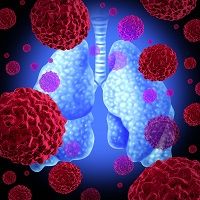Aggressive TB Treatment Does Not Save More People with HIV
World Tuberculosis Day is recognized every year on March 24, and in some countries the lung infection is the number one killer in patients with the human immunodeficiency virus (HIV).

World Tuberculosis Day is recognized every year on March 24, and in some countries the lung infection is the number one killer in patients with the human immunodeficiency virus (HIV).
It’s more difficult to diagnose tuberculosis (TB) in those with HIV, so to compensate for that, many physicians prescribe aggressive multi-drug treatments. However, researchers from the Perelman School of Medicine at the University of Pennsylvania (Penn Medicine) found that this approach does not save lives in this high-risk group.
“We don’t necessarily need to subject all these patients to multi-drug regimens,” co-lead author Gregory P. Bisson, MD, MSCE, an assistant professor in the division of Infectious Diseases, said in a news release.
The World Health Organization (WHO) recommends isoniazid for patients with HIV who live in limited-resource areas to prevent TB. WHO’s current guidelines say that healthcare provides should screen those with HIV for TB, and if they are not diagnosed with the condition, they should prescribe isoniazid to prevent it. However, there’s been a concern that this will cause patients to develop resistance to the drug.
- Related: There’s a Reason Why It’s Harder to Diagnose Tuberculosis in HIV-Positive Pregnant Women
Published in The Lancet, the researchers gathered 850 participants from 10 different countries to compare isoniazid with a four-drug empirical TB treatment. Of those, 424 patients received empirical therapy and the other 426 patients had isoniazid preventive therapy.
After 24 weeks, patients with advanced HIV disease stage had similar survival rates using isoniazid compared to those who had the more aggressive multi-drug approach. About one out of every 20 patients in the study died during the 24 weeks, but the multi-drug approach did not prove to be more effective or save more lives. Actually, at the end of the study, more people in the empirical group (17%) had progressed to AIDS than those in the isoniazid group (13%).
“Our participants were able to tolerate isoniazid very well, and we saw no evidence that they developed drug resistance more commonly, as is often feared,” Bisson confirmed.
The findings indicate that physicians should continue screening HIV-positive patients for TB and prescribe isoniazid to those who aren’t diagnosed with it.
“And furthermore, if these advanced HIV patients can tolerate the isoniazid, less advanced HIV patients very likely can do well under this paradigm, too,” Bisson concluded.
Also on MD Magazine >>> Resistance to Common HIV Treatment Persists Worldwide